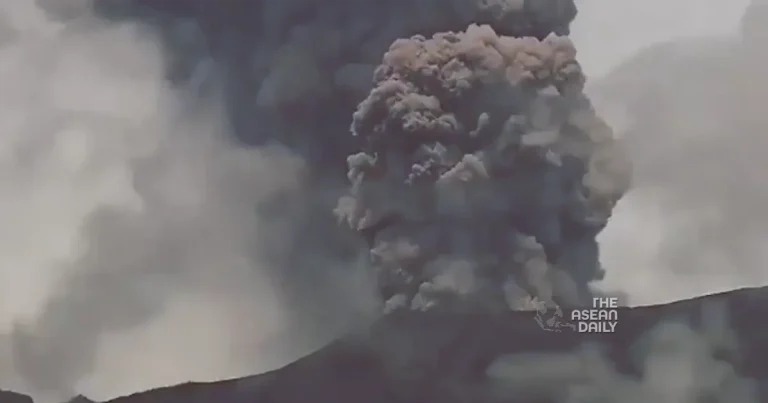30-5-2024 (JAKARTA) On Thursday, Mount Merapi in West Sumatra province erupted, sending a cloud of ash two kilometres into the sky. Authorities have issued warnings to residents about the potential dangers posed by cold lava flows.
The eruption occurred at 1:04pm local time (2:04pm in Singapore), with the national disaster mitigation agency (BNPB) reporting that the volcano released thick grey clouds of ash 2km above its peak. Mount Merapi, one of Indonesia’s most active volcanoes, has been on the second-highest alert level in the country’s four-tiered warning system for several weeks. Authorities have advised people to remain outside a 4.5km exclusion zone around its crater.
BNPB spokesman Abdul Muhari cautioned local residents to be vigilant about the risks of cold lava flows, known locally as lahar, following the eruption. “People are urged to stay away from river areas originating from the Merapi volcano and be alert to potential lahar dangers, especially during rainfall,” he advised.
Lahar, a hazardous mix of volcanic materials such as ash, sand, and pebbles, is carried down the volcano’s slopes by rain. In May, heavy rains caused volcanic debris to flow into districts near Merapi, resulting in over 60 deaths, destruction of numerous homes, and damage to roads and mosques.
El Monte Merapi, ubicado en Sumatra Occidental, Indonesia, entró en erupción este jueves, expulsando una columna de ceniza de al menos 2,000 metros sobre la cumbre. pic.twitter.com/tLXlf6qrkO
— Noticiero El Salvador ???????? (@NoticieroSLV) May 30, 2024
Muhammad Wafid, head of the geological agency, recommended that residents wear face masks to protect against respiratory issues in the event of ash falls. He also advised clearing volcanic ash from roofs to prevent structural collapses.
Indonesia, an archipelago with frequent seismic and volcanic activity due to its location on the Pacific “Ring of Fire,” experiences regular eruptions. In December, Mount Merapi erupted, sending a 3,000-metre ash tower into the sky, which tragically claimed the lives of at least 24 climbers, most of whom were university students.




